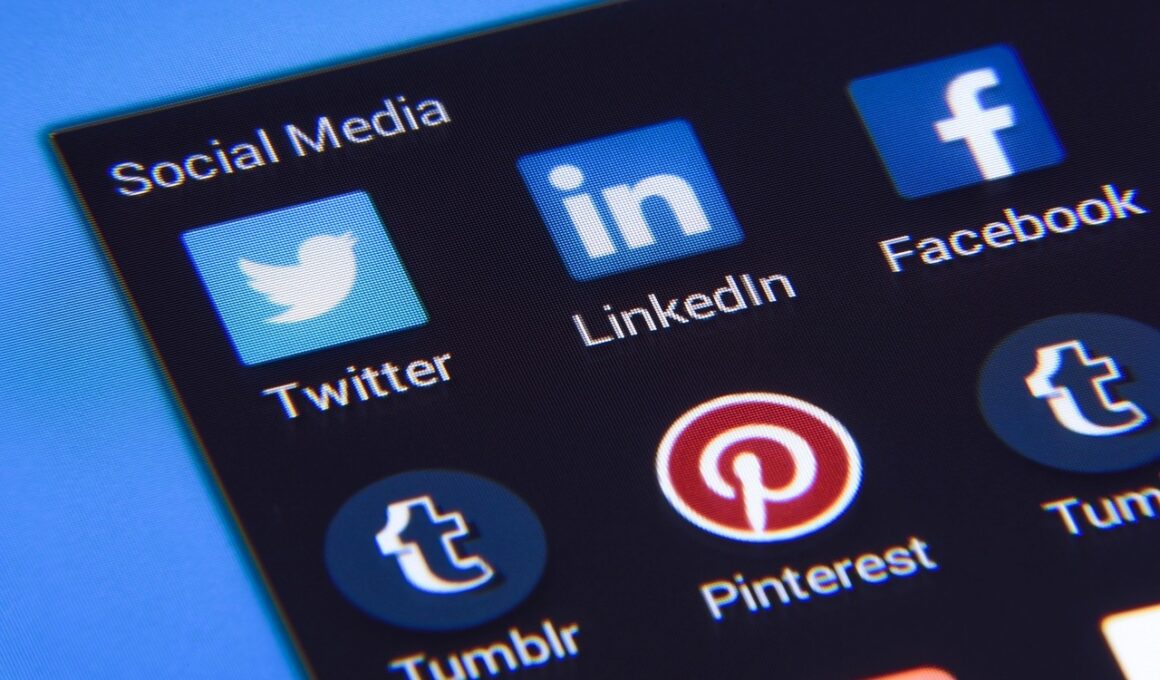Augmented Reality Effects and Their Impact on Social Media Branding
Augmented reality (AR) is rapidly transforming how brands engage with audiences on social media. With a blend of digital elements into real-world settings, AR captivates users’ attention, creating immersive experiences that traditional media cannot replicate. As the technology matures, businesses are leveraging AR to increase brand visibility and enhance customer interaction. The ability to incorporate AR into social media platforms allows brands to tell their stories creatively. This innovative approach not only boosts engagement but also fosters deeper emotional connections with consumers. Major brands such as Nike and Starbucks have embraced AR features, resulting in increased customer loyalty and satisfaction. Furthermore, AR applications enable users to visualize products in their environment before purchase. This capability reduces uncertainty and enhances the buying experience. Moreover, AR-driven campaigns prompt users to share their experiences on social media, further amplifying brand reach. This virality aspect is crucial, as social media thrives on authenticity and user-generated content. Hence, brands that invest in AR technology can enhance their marketing strategies, improve conversion rates, and ultimately lead to increased revenue. The synergistic relationship between AR and social media is reshaping the branding landscape significantly.
As augmented reality continues to gain traction, its impact on influencer marketing is becoming increasingly pronounced. Influencers now integrate AR elements into their content, creatively showcasing products to captivate followers. This trend not only elevates the presentation but also enhances authenticity and relatability. When brands collaborate with influencers to use AR, they tap into their existing audience and build a bridge to potential customers. Influencers can leverage AR filters and effects on platforms like Instagram and Snapchat, enhancing their storytelling capabilities. This collective approach fosters interactive experiences between influencers, brands, and audiences. Unique AR experiences often lead to higher engagement levels, with viewers more likely to share content on social media platforms. This organic dissemination of content amplifies brand messages and increases visibility across various demographics. Consequently, brands should thoughtfully consider partnerships with influencers who align with their values and target audiences. As AR technology continues evolving, the demand for innovative influencer content is paramount. Therefore, embracing AR can be a game changer for both influencers and brands, forging connections that drive conversions and deepen customer relationships.
The Importance of User Engagement
User engagement is paramount in today’s digital landscape, especially when considering the influence of augmented reality. Augmented reality creates interactive experiences that directly involve users in the brand narrative. Unlike traditional media that delivers a passive experience, AR encourages active participation and exploration. This immersive element prompts users to spend more time interacting with content, resulting in a deeper connection to the brand. Interactive campaigns utilizing AR not only increase engagement rates but also foster word-of-mouth referrals. Research indicates that audiences are more likely to share their experiences when they feel involved or entertained. Brands that effectively integrate AR into their marketing strategies see a notable increase in social media mentions and user-generated content. Such metrics are crucial for brand visibility, especially in an era where organic reach is challenging. Engaged users are also more inclined to make purchases, as their immersive experience fosters a greater understanding of product value. Additionally, using AR for interactive quizzes or games can substantially increase user participation. Therefore, investing in AR not only elevates engagement but also builds a robust community of brand advocates.
Moreover, the role of storytelling in augmented reality cannot be overstated. In an era where consumers crave meaningful connections, AR storytelling offers brands an avenue to convey narratives effectively. By integrating their brand story into engaging AR experiences, companies can evoke emotional responses that resonate with users. For instance, a fashion brand may present a virtual runway show, allowing users to explore garments in a dynamic way. This technique not only showcases products but also crafts a memorable experience that consumers will associate with the brand. Additionally, AR can facilitate unique storytelling formats, such as interactive timelines or character-driven narratives. These approaches enhance user retention, encouraging audiences to delve deeper into brand lore. Moreover, consumers who experience compelling stories are more likely to advocate for brands, creating brand loyalty. Such user advocacy often translates into organic reach, widening the brand’s visibility effortlessly. Ultimately, the fusion of storytelling and AR provides brands with an innovative method of connecting, fostering emotional resonance. As social media evolves, those who master storytelling through AR will lead the way in brand differentiation.
Challenges and Opportunities
While augmented reality offers numerous opportunities for brands, it also poses several challenges. One significant challenge is the cost and complexity associated with developing AR content. Creating high-quality augmented experiences often requires specialized knowledge and resources. Brands, particularly smaller organizations, may find these barriers daunting, limiting their ability to compete. Additionally, the fast-paced nature of social media trends necessitates agile responses from brands. This can make it difficult for companies to maintain relevance in a constantly evolving environment. However, overcoming these challenges presents unique opportunities. With the right investment, brands can create unforgettable AR experiences that set them apart. Collaborations with AR developers can also streamline the process, making it more accessible to various businesses. Furthermore, as technology advances, user-friendly AR tools are beginning to surface, allowing brands to create content without extensive technical knowledge. This democratization of AR technology may level the playing field, enabling all brands to harness its potential. Embracing AR as a core component of social media branding strategies presents a chance to engage consumers more effectively and creatively.
Furthermore, tracking and analyzing the effectiveness of augmented reality campaigns is crucial for optimizing future efforts. Brands must adopt analytics tools to gauge user interaction with their AR features. Metrics such as engagement rates, time spent on AR experiences, and conversion rates provide valuable insights into campaign performance. Understanding user behavior helps brands tailor their strategies, adapting to the preferences and interests of their audience. Regularly reviewing these metrics allows brands to identify successful elements and areas requiring improvement. Additionally, user feedback is an invaluable resource for refining AR offerings. Engaging with audiences through surveys or social media interactions can yield insights into their experience with AR content. This two-way communication fosters stronger relationships and shows consumers that their opinions are valued. Consequently, brands that prioritize feedback and performance analysis position themselves for long-term success. By continuously enhancing AR experiences based on user data, brands can sustain user interest and loyalty effectively. Thus, constructing a framework for thorough evaluation and refinement is essential for maximizing AR’s impact on social media branding.
Future Trends in AR for Social Media
Looking ahead, several trends are expected to define the future of augmented reality within social media marketing. One significant trend is the increasing integration of AR with artificial intelligence. Utilizing AI can enhance personalization, tailoring AR experiences to individual users’ preferences and behavior. This combination is likely to create more relevant and impactful user experiences, driving engagement even higher. Another trend is the rise of virtual try-on experiences in the beauty and fashion sectors. As consumers gravitate toward online shopping, brands that incorporate AR for virtual fitting will give users confidence in their purchases. Additionally, the social sharing functionalities of AR experiences are likely to expand, fostering greater user interaction. More collaborations between brands and tech companies can streamline the development of sophisticated AR tools, making them more accessible for widespread use. As 5G technology rolls out, the speed and efficiency of AR experiences will improve significantly, enhancing user satisfaction. Finally, AR’s role in social commerce will dramatically increase, as platforms allow direct purchases from virtual experiences. These anticipated developments reveal that AR will continue reshaping the trajectory of social media marketing strategies.
In conclusion, the integration of augmented reality into social media branding strategies is no longer optional but essential. To navigate the complexities of the digital landscape, brands must harness AR technology effectively. This immersive tool allows brands to connect deeply and authentically with their audiences. Through interactive campaigns, storytelling, and influencer collaborations, AR empowers brands to create memorable experiences. Despite the challenges, the potential rewards greatly outweigh the barriers. By investing in robust analytics and user feedback, brands can continually optimize their AR strategies. Looking to the future, as trends evolve, brands must remain agile and innovative in their approach to AR. Ultimately, those who embrace and adapt to this technology will not only enhance their branding but also foster a loyal customer base. As AR advances and becomes more sophisticated, it is poised to become a cornerstone of social media marketing, ensuring brands stay relevant in a competitive landscape. Thus, investing in augmented reality is not just a trend but a significant stride toward a brand’s long-term success and sustainability.


